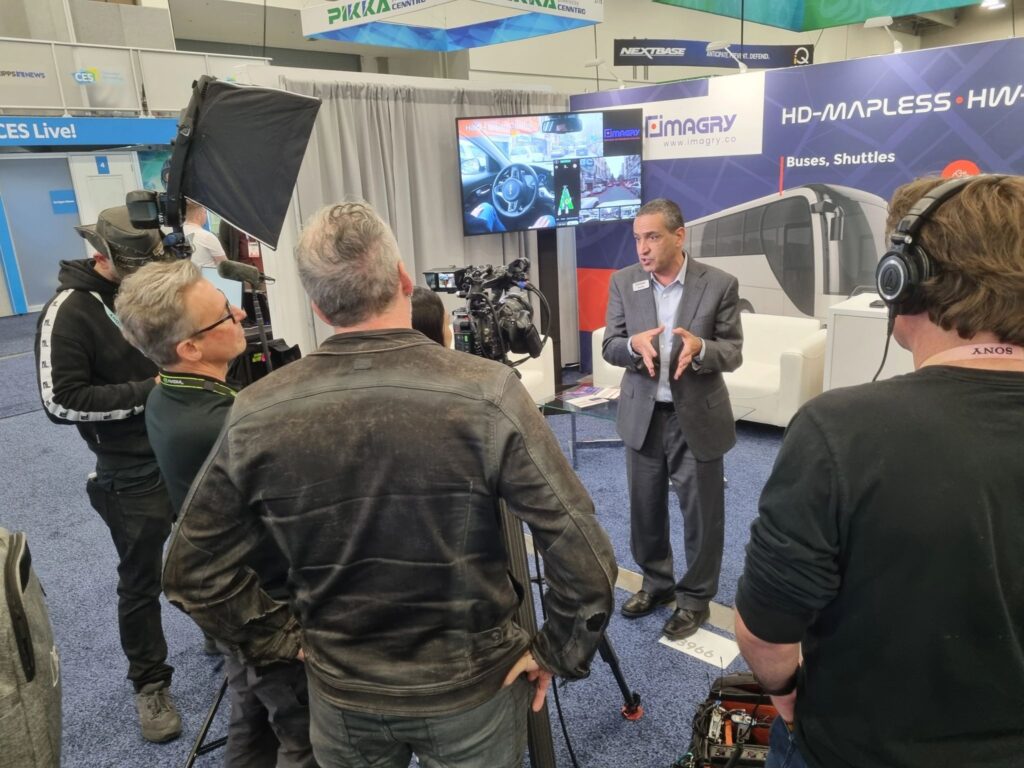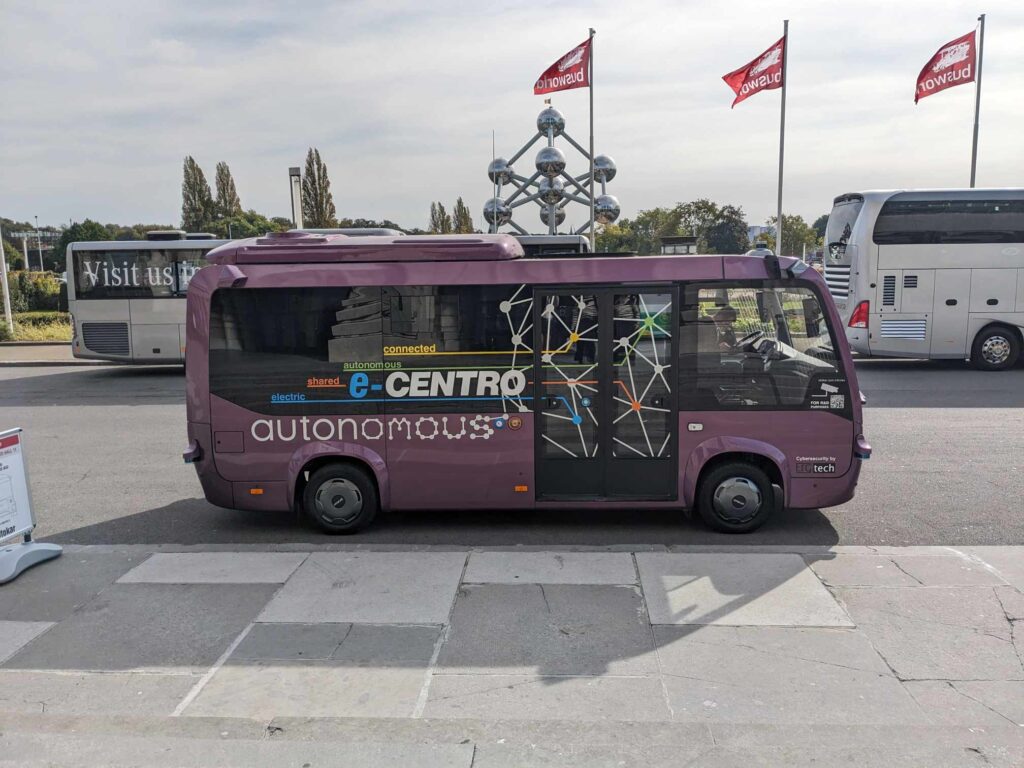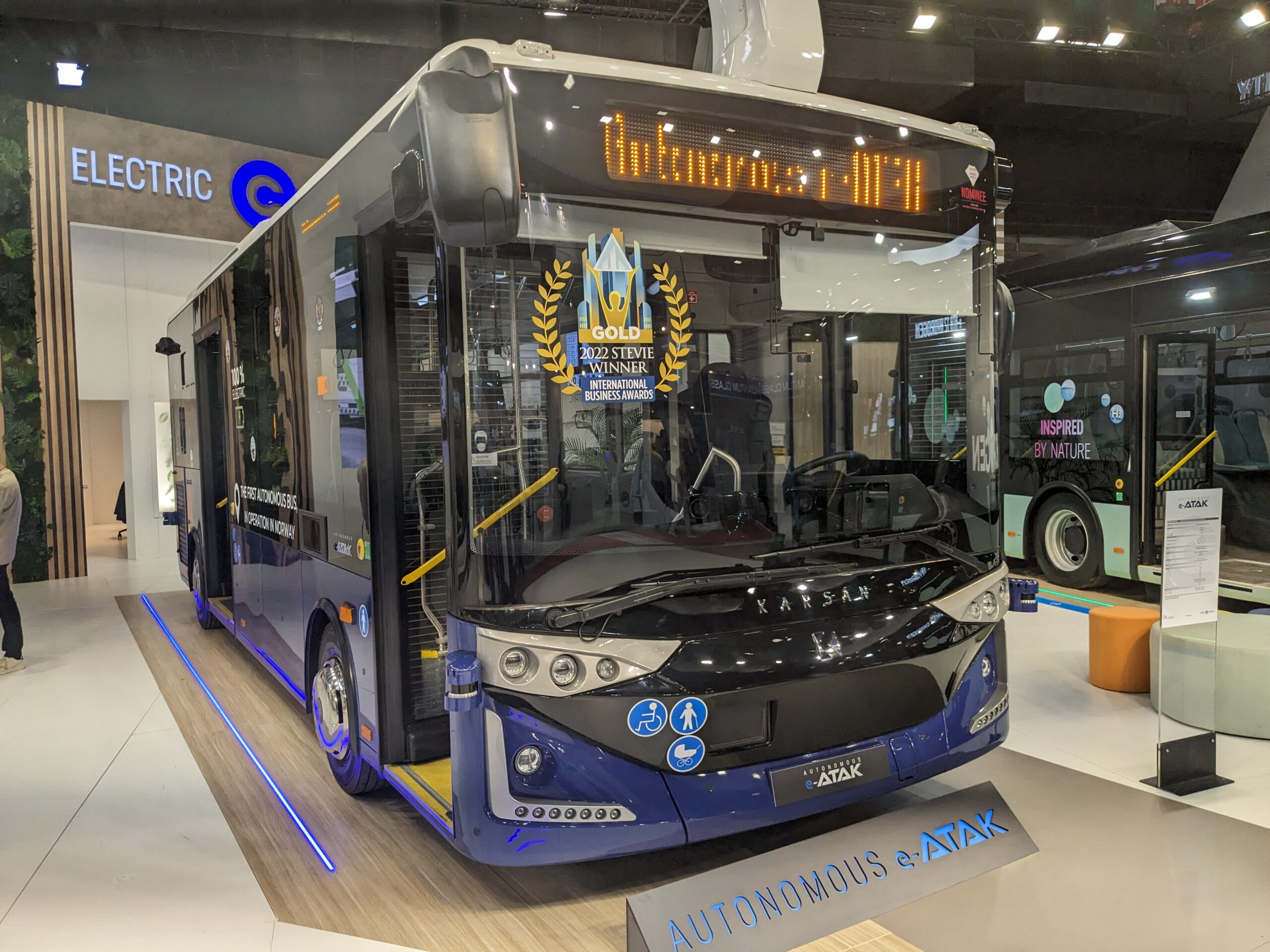Alongside showcasing some of the latest advancements in driverless technologies for automotive vehicles, CES 2024 highlighted how these developments can also be leveraged to benefit bus operations.
For example, Imagry’s mapless driving system exhibited at the event was initially produced for the automotive industry due to the substantial size of this market. However, as its software is also deployable in larger, public transit vehicles, it has likewise been adopted by bus manufacturers to help overcome staff shortages and enhance sustainability.

Imagry’s solution combines real-time vision-based perception and motion planning artificial intelligence (AI). This Level 4 autonomous technology has already been installed on electric Otokar midi-buses for deployments in urban environments and operational zones in Europe and the Middle East. Now, the company is seeking a bus manufacturer homologated for the US and Canadian markets.

Imagry’s solution digitally enhances driving to allow transit operators to expand their fleets and increase the frequency of their routes, despite the worldwide driver shortage.
As it does not rely on HD mapping, the software is location-independent, using real-time inputs from cameras. In addition, it also allows autonomous buses to travel at speeds of up to 50 kilometres per hour, rather than the typical limit of 20 kilometres per hour.
Imagry’s ongoing success thus demonstrates how Level 4 driving capabilities can help deliver more efficient and attractive public transport options. This highlights the potential for the many automotive technologies showcased at CES to have supplementary use cases beyond personal vehicles.
Indeed, the event also presented additional shared transport options, such as WeRide’s Robobus, which can transport up to 10 seated passengers at speeds of up to 40 kilometres per hour. This vehicle demonstrated its Level 4 autonomous driving capabilities at the Convention Center’s West Plaza.

Meanwhile, during a panel discussion, May Mobility’s CEO Edwin Olson highlighted that standard passenger cars equipped with autonomous technologies can also be used to enhance public transport networks.
Unlike robotaxi operations, May Mobility is deploying driverless on-demand vehicles in conjunction with city authorities and public transport operators to fill network gaps in a more economical manner than deploying full-sized buses. In doing so, May Mobility aims to connect more people to existing bus networks to ultimately expand the utility and range of public transport.

Consequently, a key takeaway from CES this year highlighted that its substantial focus on the automotive industry is also propelling progress for buses, albeit out of the event’s high-profile spotlight.
In addition to driverless technologies, this includes advanced driver assistance systems (ADAS) and driver monitoring systems (DMS), which can enhance safety and efficiency for buses as well as cars.
For example, leading companies in these fields who participated in CES also took part in Busworld Europe last year, including Smart Eye and Mobileye. Indeed, Smart Eye has developed a version of its in-cabin sensing technology specifically for trucks and buses: AIS CV Alert, while Mobileye offers ADAS technologies for consumer, commercial and public transport vehicles alike.

As a result, bus operations have a lot to gain from the continued automotive advancements, and it is thus important to remember that the bus and car industries are allies rather than competitors when it comes to such technologies.


















